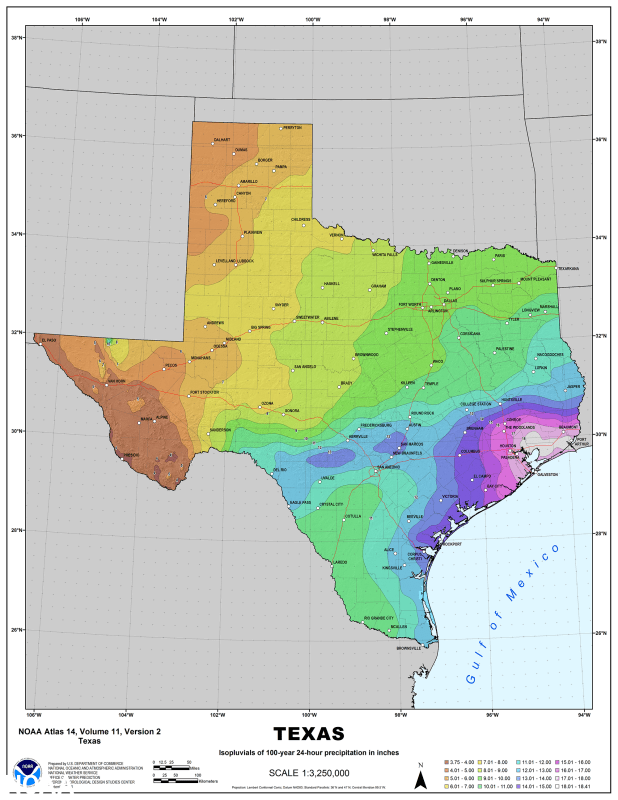HI!
This is probably just a simple question.
I have a question, i hope someone has the answer quickly
in mononobe rain intensity equation, we have I = R24/24 x (24/t)^ (2/3)
if i take R24= 1 unity, i have an intensity of 0.347 R24 if duration of rain is 1 hour and 0.042 if duration of rain is 24 hr
My question is, how do you understand this?
if this rain extend for 24 hour then the amount of rain is 0.042 x 24 = ~ 1. in my understanding, the rain intensity is linear/ stagnant and the rain last for 24 hour
But if i apply the same logic, if the rain only last for 1 hour, the amount of rain in that hour is only 0.347 or 34.7% from R24 that we usually interpret as daily rainfall for x return period. So where does the rest (0.653 unity) rain go? The rain for that day only last for 1 hour , right?
Is there another 1.88 hour of rain (i get this from 0.653/0.347) that happens in that day that happens in different time? let us say, 1st rain happen during 1 am to 2 am then there are other rain that happen lets say 3 pm to 4 pm and another one at 7 pm to 53 min pass 7 pm (this is 0.88 hour) ? Is this how you interpret the mononobe theory? So what is the concept of t (duration of rain), if the understanding is like above. It means the rain isn't really last for 1 hour. Just the longest duration of the highest peak of rain which is 1 hour. There is assumed to be another one or two hours inn that day in which the rain also happens but perhaps with the same or lower intensity of rain. Does my understanding correct? I don't really get it.
Thanks in advance.
This is probably just a simple question.
I have a question, i hope someone has the answer quickly
in mononobe rain intensity equation, we have I = R24/24 x (24/t)^ (2/3)
if i take R24= 1 unity, i have an intensity of 0.347 R24 if duration of rain is 1 hour and 0.042 if duration of rain is 24 hr
My question is, how do you understand this?
if this rain extend for 24 hour then the amount of rain is 0.042 x 24 = ~ 1. in my understanding, the rain intensity is linear/ stagnant and the rain last for 24 hour
But if i apply the same logic, if the rain only last for 1 hour, the amount of rain in that hour is only 0.347 or 34.7% from R24 that we usually interpret as daily rainfall for x return period. So where does the rest (0.653 unity) rain go? The rain for that day only last for 1 hour , right?
Is there another 1.88 hour of rain (i get this from 0.653/0.347) that happens in that day that happens in different time? let us say, 1st rain happen during 1 am to 2 am then there are other rain that happen lets say 3 pm to 4 pm and another one at 7 pm to 53 min pass 7 pm (this is 0.88 hour) ? Is this how you interpret the mononobe theory? So what is the concept of t (duration of rain), if the understanding is like above. It means the rain isn't really last for 1 hour. Just the longest duration of the highest peak of rain which is 1 hour. There is assumed to be another one or two hours inn that day in which the rain also happens but perhaps with the same or lower intensity of rain. Does my understanding correct? I don't really get it.
Thanks in advance.


